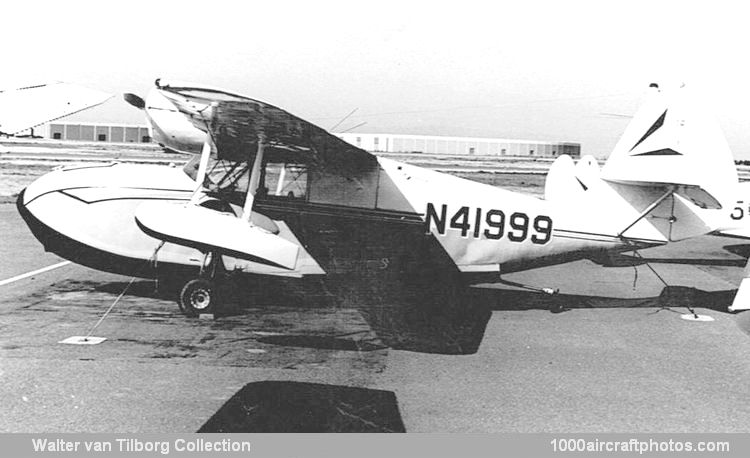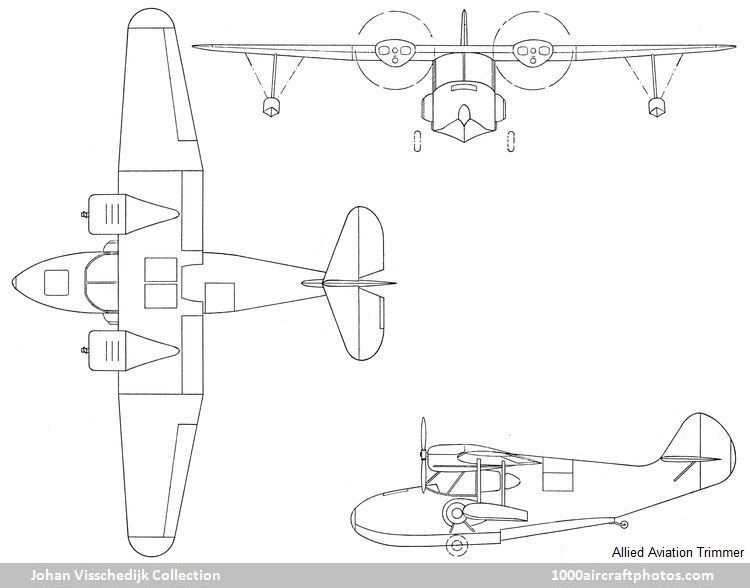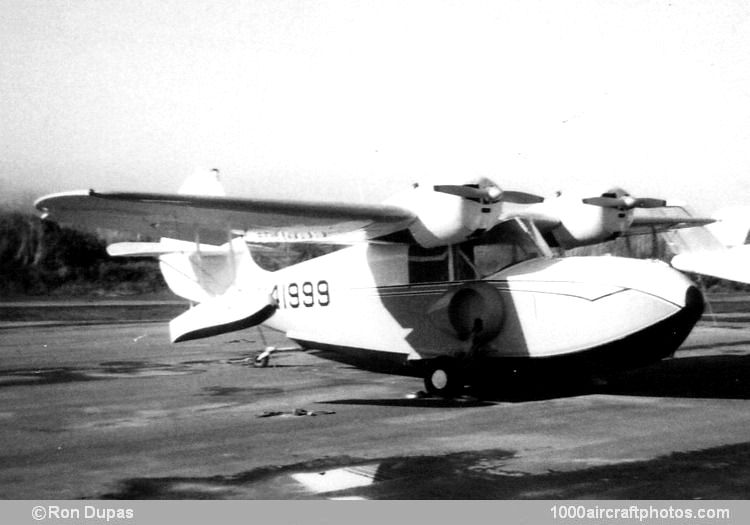

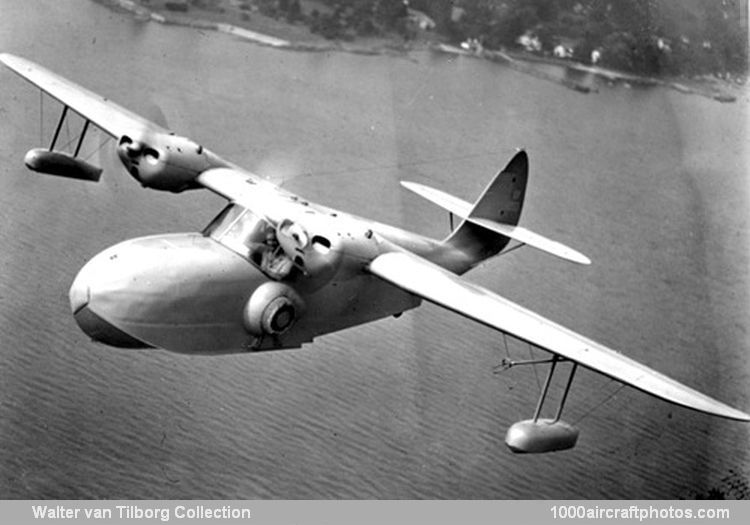
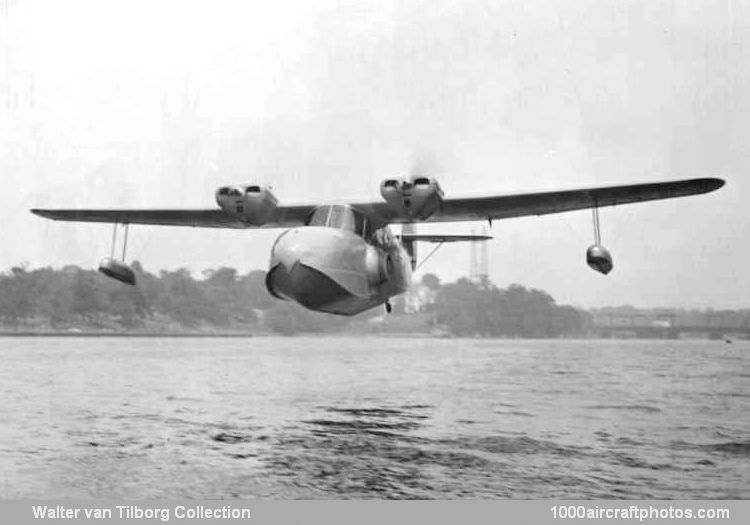
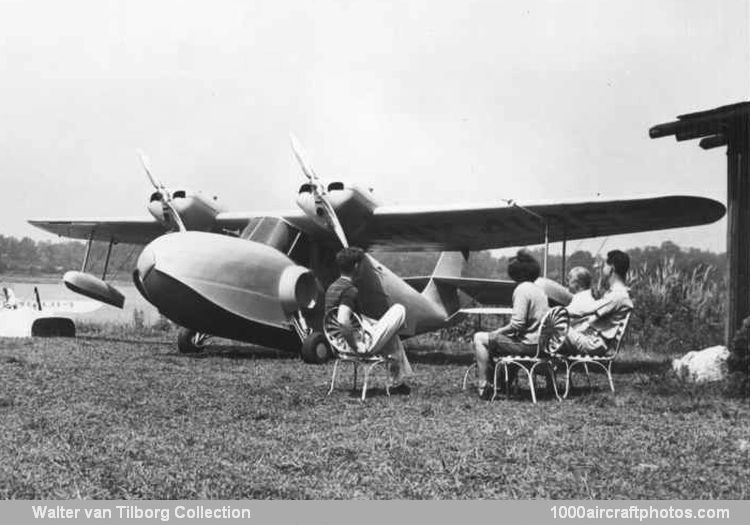
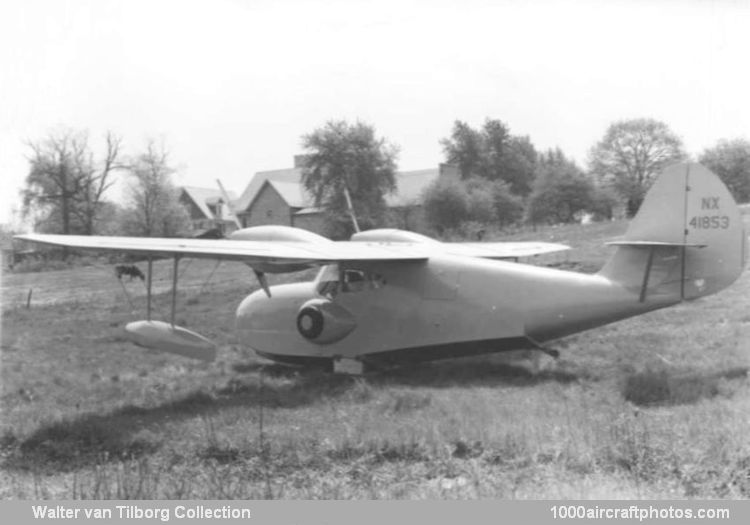
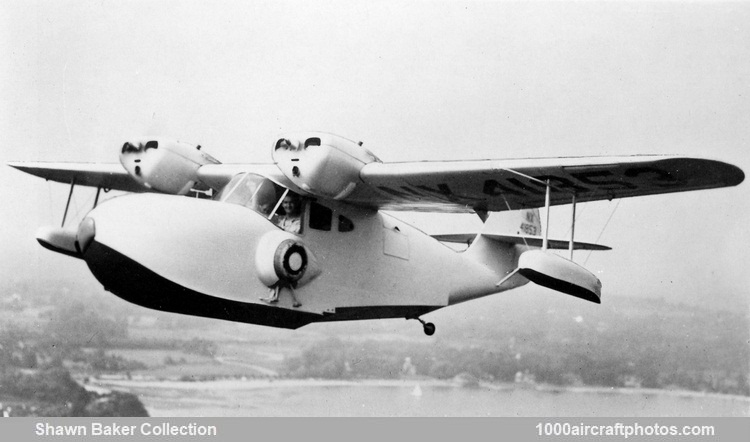
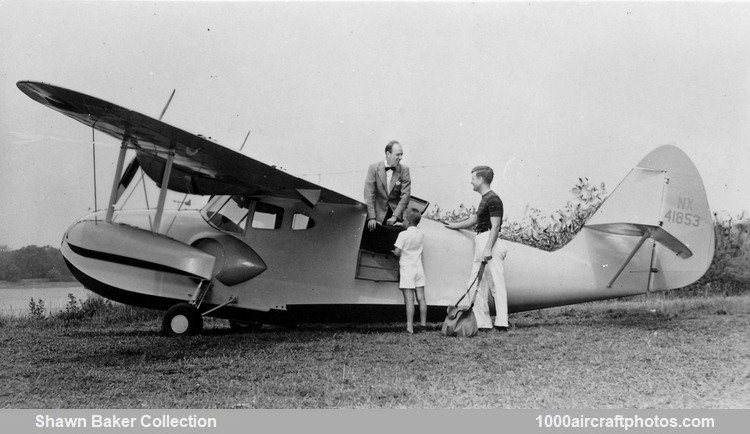
Wings: High-wing cantilever monoplane. Rectangular center section, incorporating the two engine nacelles, all engine instruments, throttles, switches, battery, flaps and flap-controls, were attached to a steel tube cabane in the hull and could be completely removed by the loosening of four fittings and the disconnection of aileron controls and fuel lines. Tapering outer wings had built-in leading edge slots and carried ailerons and wing-tip floats. Structure entirely of plastic bonded plywood.
Hull: Two-step structure of plastic bonded plywood.
Tail unit: Braced monoplane type. Fin built integrally with hull with tail plane mounted above hull and braced by single struts. Plastic bonded plywood construction.
Landing gear: Retractable type. Oleo-sprung wheels raised into faired recessed in sides of hull. Landing-gear detachable and when dismounted auxiliary drum-shaped tanks could be carried in wheel recesses to increase range. Leaf-spring tail-wheel on second step.
Power plant: Two 75 hp Continental C75 four-cylinder horizontally-opposed air-cooled engines in nacelles in the leading edge of the center section. Laminated wood propellers with pitch adjustable on the ground. Normal fuel capacity 40 gal (151 l). Two 10 gal (38 l) auxiliary drum tanks could be installed in wheel recesses when amphibian gear not fitted.
Accommodation: Enclosed cabin seating three, two seats side-by-side with dual controls in front of cabin and one aft. Entrance hatch aft of wing with second hatch in nose.
Wings: Cantilever high-wing monoplane. Airfoil section (root) NACA 23015, (tip) NACA 23012. Two box-spar structure in three sections consisted of a constant-chord center section integral with hull and carrying engines and accessories, and two tapered outer sections with semi-circular tips. Center section had plywood covering, outer sections covered with plywood to rear spar and thereafter with fabric. Statically-balanced fabric-covered wooden ailerons on ball-bearing hinges. Aileron movements, up 30 degrees, down 25 degrees. Plain-hinge flaps in two pieces on center section, plywood structure and covering. Built-in leading edge slots on outer wings.
Hull: Two-step structure of molded plywood divided into three watertight compartments. Bonded phenolic paper finish. Wingtip floats of similar construction attached to outer wings by streamlined steel-tube struts and wire-braced.
Tail unit: Semi-cantilever monoplane type, with strut-braced tail plane. Fin and tail plane of wooden construction with plywood covering. Rudder of wooden construction with fabric covering. Controllable rudder trim-tab. Welded steel statically-balanced elevators with fabric covering. Controllable trim-tab in port elevator. Rudder movement 30 degrees each way; elevator movements up 25 degrees, down 25 degrees.
Landing gear: Retractable two-wheel type. Wheels carried on Electric Model 400-5 hydraulic shock-absorber struts and raised into recessed fairings on sides of hull. Electric or hydraulic operation, with emergency manual gear. Tail-wheel on leaf spring on rear step. Goodyear single-disc hydraulic brakes with Scott hydraulic actuators.
Power plant: Two 85 hp Continental C85-12 four-cylinder horizontally-opposed air-cooled engines in center section on welded steel tube rubber-mounted bearings and attached by four bolts. Cruising rpm 2,300; maximum rpm 2,575. Two-blade fixed pitch or constant-speed propellers. Maximum fuel capacity 40 gal (151 l). Oil capacity 1.25 gal (4.7 l) each engine. 10 gal (38 l) special long-range tanks fitting into wheel fairings could replace land undercarriage.
Accommodation: Enclosed and sound-proofed cabin seating three; two side-by-side with dual controls in front, and one behind. Adjustable seats. Windows in roof above rear seat. Three seats convertible to two bunks on de Luxe model. Entry hatch on port side of hull aft of wing, and mooring hatch in deck forward of windscreen.
Equipment: 12-volt electric system. Anchorage gear in forward watertight compartment. Two-way radio, landing lights and constant-speed propellers on de Luxe model.
